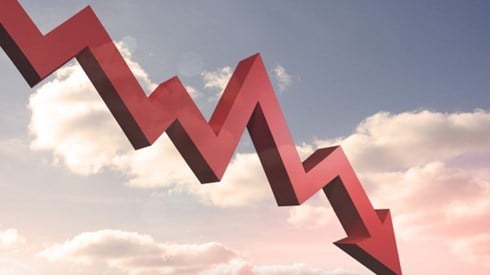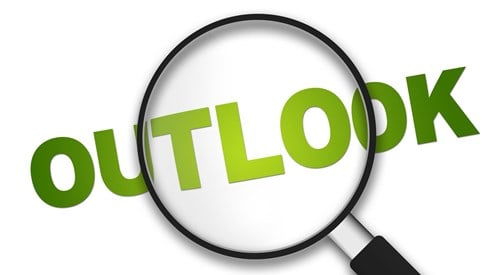2023 Seen as Transition Year for US Property-Casualty Profitability

October 02, 2023 See Related Articles and Videos

This year will likely be a transition year for the US property-casualty insurance industry's profitability, as the industry moves from a difficult 2022 to a stronger 2024 as higher premiums and increased interest rates improve industry results, according to Swiss Re.
In a September 21, 2023, report, US Property & Casualty Outlook: Premiums in Race To Catch Up with Claims Costs, from the Swiss Re Institute, the reinsurer suggests that the US property-casualty industry has yet to reach an inflection point between premium growth rates and claims costs.
Instead of reaching that inflection point, the industry has seen accelerating personal lines rate increases, the hard market for commercial property insurance, and high reinvestment yields offset by a variety of factors, according to Swiss Re. Those headwinds include the costliest second quarter for natural catastrophes since 2011, ongoing inflation, and slowing favorable reserve development, the report says.
Through the first half of 2023, the US property-casualty industry posted $22 billion in underwriting losses, leading to net income of $2 billion despite higher investment earnings, Swiss Re says. The reinsurer adds that it's lowering its estimate for 2023 return on equity (ROE) for the US property-casualty industry to 6.5 percent from an earlier estimate of 8.0 percent and raising its premium growth estimate for the sector to 9.0 percent from 7.5 percent.
Swiss Re says it's maintaining its 9.5 percent 2024 return on equity estimate for the US property-casualty industry. "Though this year is a huge improvement on 2022 (ROE: 2.4 percent) as higher investment returns have boosted insurers' profitability, elevated catastrophe activity is weighing on underwriting results," the report says.
The report notes that $34 billion in severe convective storm claims during the first half of this year contributed to an extra $16 billion in claims costs, with a higher share retained in insurers' net results. Meanwhile, a 14 percent increase in total loss costs outweighed 7 percent growth in net earned premiums, resulting in the first-half underwriting loss of $22 billion.
That first-half underwriting loss was partially offset by a 28 percent year-on-year increase in net investment income, Swiss Re says.
"Halfway through peak hurricane season without a major claims event, we expect stronger underwriting results in H2 2023 as the sharpest inflationary impact on loss costs recedes, and gains from higher interest rates accrue," the report says. "On Q2 2023 earnings calls, insurers also indicated that personal lines rate increases will be higher than initially expected."
Regarding US property-casualty insurers' underwriting, Swiss Re says it's revising its 2023 combined ratio forecast for the segment upwards to 102.0 percent. The report notes that the industry's net combined ratio jumped to 107.3 percent in the second quarter, with natural catastrophes adding 11.8 percentage points to the combined ratio. The impact of natural catastrophes was well above the 10-year average of 6.3 percent, the report says.
Swiss Re cites the impact of ongoing inflation on property claims severity. For the year to date, the personal lines loss ratio was nearly 23 percentage points higher than that for commercial lines, the reinsurer says, as catastrophes affected homeowners policies more than commercial property policies.
The report says that Swiss Re expects loss severities to ease as US Consumer Price Index inflation slows to the reinsurers' forecast of 4.0 percent in 2023 and 2.5 percent in 2024. That reduction in inflation will set the stage for improved underwriting results for US property-casualty insurers as rate gains eventually outpace the cost of claims, the reinsurer says.
For now, however, property loss costs have surged, the report says. During the first 6 months of 2023, homeowners property claims costs increased 36 percent year over year, while commercial property claims costs were up 30 percent. The increases, driven by inflation and natural catastrophe losses, delayed improvement in overall industry profitability, Swiss Re says.
The homeowners loss ratio increased 15 percentage points year over year to more than 82 percent, the highest first-half loss ratio in more than a decade, according to Swiss Re. "Partly as a result, insurers are restricting business in catastrophe-prone markets, and the availability and affordability of insurance has now gained the attention of Congress," the report says. "In California, for example—where insurers have announced pullbacks this year—there is an estimated 20 percent less availability for insurance options than a year ago."
In the US commercial lines market, price trends are bifurcating, the Swiss Re report says. Citing the latest report from the Council of Insurance Agents & Brokers, the report notes that the average rate for commercial lines increased 8.9 percent year on year in this year's second quarter, a bit faster than the 8.3 percent increase during the first quarter.
While commercial property rate increases remained strong at 20 percent in the second quarter, those increases were down slightly from a 21 percent hike in the first.
"By contrast, rate gain momentum in liability lines is significantly lower, remaining generally steady in the low to high single-digits except for (directors and officers) and cyber, where price gains are slowing," Swiss Re says. "Overall, we expect rate increases through 2023 as inflation and catastrophes put upward pressure on claims and operating costs."
October 02, 2023









